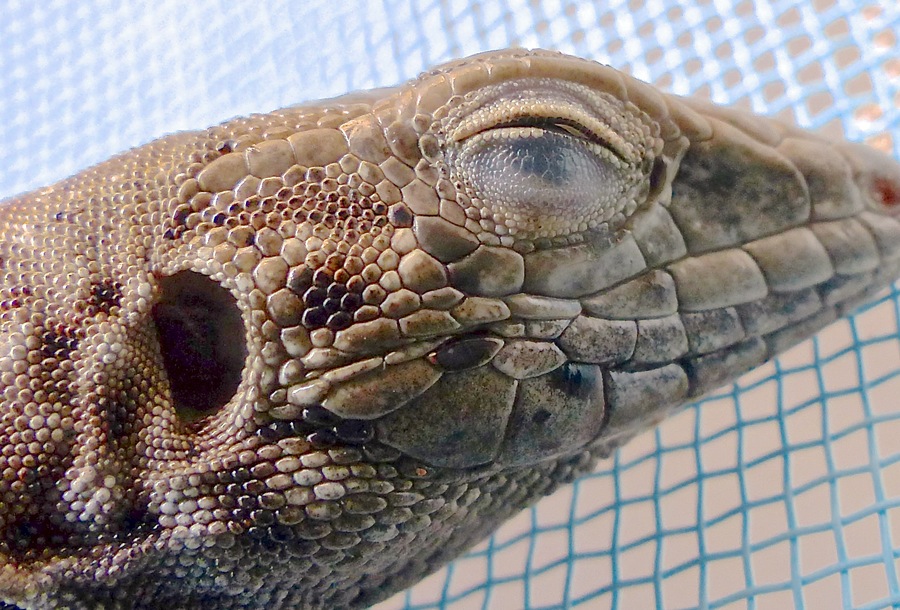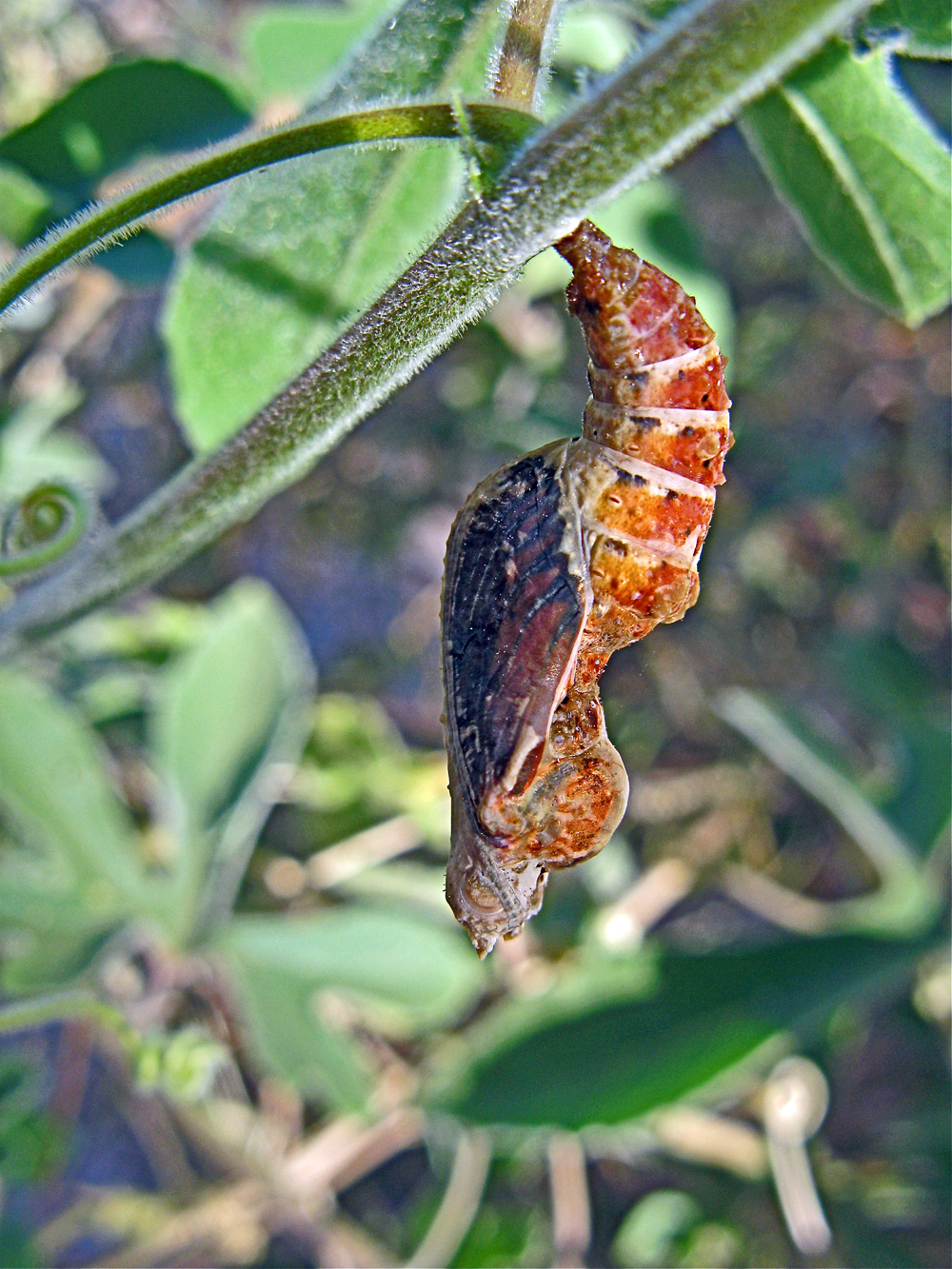Not dead yet
 << The last post was a photo-op provided by the death of a Tiger Whiptail by drowning. But today I saw the tiniest slip of a whiptail — maybe fresh from the egg — snapping up ants on the back porch. Life goes on.
<< The last post was a photo-op provided by the death of a Tiger Whiptail by drowning. But today I saw the tiniest slip of a whiptail — maybe fresh from the egg — snapping up ants on the back porch. Life goes on.
This morning, when I opened the pool skimmer basket, a female Palo Verde Root Borer Beetle more than three inches long was swirling around inside, caught in the suction whirlpool. She looked defunct. I fished her out, arrayed her on a large ammonite fossil, and took some macro shots. Just as I was finishing up a couple of her feet started flexing and waving. These are very tough creatures: this isn’t the first time moribund subjects have resurrected during a photo session. I put her in a sheltered place to recover or to complete her expiration and fulfill the local ants’ devotion to energetic thrift. I recently read that although the robust and destructive larvæ of this beetle can live underground for several years chewing on tree roots like Niddhog gnaws Yggdrasil, the adult beetle will only live the span of a single monsoon season. It’s entire purpose is to mate, fertilize or lay eggs, and die.
Here’s a raccoon’s-eye view of her (all photos A.Shock):
 When I checked again later, she was gone. I’m not sure what scavengers are abroad in daylight hours who are large enough to nab her — the foxes and raccoons won’t come out until after dark, so maybe she revived and crawled away
When I checked again later, she was gone. I’m not sure what scavengers are abroad in daylight hours who are large enough to nab her — the foxes and raccoons won’t come out until after dark, so maybe she revived and crawled away  to burrow down into the soil to lay her eggs. Here’s a foot on the second pair of legs, like a grappling hook. These sticky hook-feet come in handy since the beetle’s favored method of travel is to bomb around through the moist monsoon air until it hits something, then cling. If one hits your face, it hurts, even though they generally just bounce off. >>
to burrow down into the soil to lay her eggs. Here’s a foot on the second pair of legs, like a grappling hook. These sticky hook-feet come in handy since the beetle’s favored method of travel is to bomb around through the moist monsoon air until it hits something, then cling. If one hits your face, it hurts, even though they generally just bounce off. >>
Finally, below is an image I posted here previously called “Convergent Evolution”. This is the other “drowning victim” I mentioned earlier, the one who fully revived as I was photographing her (see the blurry foot? That was just the first indication). The pinchy mouthparts have nothing to do with eating. They are for battle — males use them to vanquish competitors, and to subdue females. The larva does all the feeding for this species. How much does that animal look like a pair of pliers? Clearly convergent evolution.























